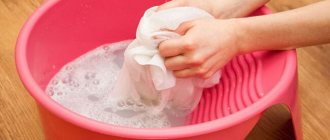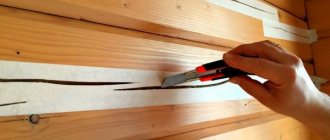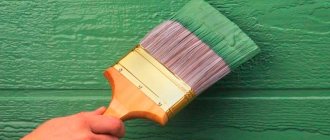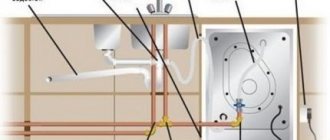Superglue is a strong adhesive that is popular due to its ability to glue objects made of different materials together. If handled carelessly, it can get onto the surface of the fabric and leave stains that cannot be removed during normal washing or using household products. Don’t rush to throw away your favorite denim trousers or jacket that are stained with superglue. You can restore the original appearance and remove the stain using substances, which we will talk about in more detail.
Removing carbon deposits from a diesel stove
We are trying to remove carbon deposits from a part of a diesel stove. The part is made of aluminum. The carbon deposits are old.
To begin with, we applied dimexide and tried to wipe off the dirt with a brush with coarse bristles. The first result appeared within five minutes. The soot gradually began to go away.
We applied the composition to the second half and warmed it up a little with a hairdryer. In a few minutes the part was completely cleared of carbon deposits.
Conclusion
Dimexide really works against carbon deposits on aluminum surfaces. To obtain the desired reaction, you need to warm up the composition a little.
Read! How to clean a gas stove quickly and efficiently
Traditional methods for cleaning superglue
Folk remedies will help clean delicate materials and the skin of your hands. They are distinguished by their availability, ease of use and safety.
Effective folk remedies for combating adhesive composition:
- soap solution. Fresh marks should be washed with soap and water - wet the rag well and rinse the area of contamination;
- hydrogen peroxide. The pharmaceutical product instantly cleans fingers and metal even from frozen traces of glue;
- sunflower or cosmetic oil. The greasy consistency will make it easier to wipe the glue off hard surfaces and skin, but is not suitable for cleaning textiles or materials that absorb oily substances;
- vinegar. Acetic essence or ordinary table vinegar quickly destroys the adhesive, which makes it much easier to remove. The product is not only effective, but also safe for all materials;
- soda. A paste made of sodium bicarbonate and water will help remove glue stains from hard materials, even if it has long since dried.
Cleaning a stainless steel pan
A stainless steel pan with carbon deposits that did not respond to any detergent from the arsenal of household chemicals.
Soaking carbon deposits in the solution does not give any results. Changes appeared after heating dimexide in a pan and treating the carbon deposits with an abrasive sponge.
It was possible to get rid of carbon deposits using an abrasive sponge only when the composition was heated strongly. At the same time, it was necessary to scrub off the dirt precisely at the moment when the dimexide was hot.
Conclusion
It is possible to remove complex deposits from stainless steel surfaces, but it is quite difficult. It takes a lot of effort. The composition is unlikely to cope with serious volumes of pollution of this kind.
Step by step cleaning
So we have already learned that there are 2 ways to deal with dimexide with superglue.
So, the first way:
- Soak (time depends on the degree of contamination and where the contamination is located)
- Scrub (it is better to use a hard sponge)
- If necessary, repeat both points in turn.
- Finally, rinse with warm water (preferably with added soap).
This method can be used to wash rough materials that will not be harmed by the product: rough fabric, uncoated wood, car body, suspended ceiling.
If you are working with delicate materials that the product can damage, then use the same procedure, but do not soak. You will need the hard side of the sponge soaked in the solution and use it to scrub the surface. These include: soft fabric, plastic items, coated wood, leather, lacquered surfaces, laminate, furniture, shoes (shoes, sneakers, boots).
When using dimexide on combined objects, such as a car, remember that by using it on a surface where the solution cannot damage anything, you can catch the material that will deteriorate from interaction with it. Again, using the example of a car, the plastic rims of the headlights or the radiator grill may be damaged.
You might be interested in reading the article “How to Remove Super Glue from Jeans at Home.” Read here...
Removing polyurethane foam
Splashes of polyurethane foam. Apply dimexide to the dirt. You cannot use foam sponges for work, as the composition corrodes them. Leave for 5–10 minutes.
Conclusion
Dimexide copes quite easily with splashes of polyurethane foam.
It will not be possible to remove rust using dimexide. The composition cannot cope with such problems.
General recommendations for removing superglue
The high adhesive property of superglue is due to the presence of cyanoacrylate in its composition, which penetrates into all cracks and pores and, when dried, forms a reliable connection. When working with the substance, mistakes often occur and it ends up on the skin of the hands and other surfaces. It is extremely difficult to remove it, since not all solvents are able to cope with this kind of contamination, and if you use inappropriate products, you can harm the items being cleaned.
To quickly and effectively wash superglue, follow these simple recommendations:
- start cleaning as quickly as possible, without allowing the composition to harden;
- do not use a solvent unless you know how it will affect the surface being cleaned;
- When working with chemicals, follow safety precautions - work in a well-ventilated area, wear rubber gloves and a respirator;
- do not use solvent on items intended for preparing or storing food;
- To clean, soak a cotton pad or soft cloth in the chosen product, apply to the stained area and leave for several hours. Then remove the softened composition mechanically and wash the surface with soapy water.
How to remove glue using Dimexide
Attention! The substance penetrates very easily into the blood under the skin, therefore, any work with it should be carried out only with gloves. Do not work with bare hands.
Dimexide dissolves superglue perfectly. For this process, you can use various methods of influence:
- Rub
- Soak
Which method to choose depends on various factors, the main one being the type of surface.
In the end, I was pleased with all the results and this drug is now on my shelf in the garage, since its use for household purposes is very justified!
Mask for the face
It turns out that the drug perfectly fights wrinkles, acne and other skin problems. Before use, it is necessary to dilute it with water, otherwise the skin will get burns. Heating the composition is prohibited, but if there is such a recipe on the Internet, then Dimexide is added last. Mixtures of the main substance and tea tree oil, sour cream, vitamins, Solcoseryl, oatmeal, and ascorbic acid are popular. Masks are used once every ten days. The course consists of no more than nine procedures. After which the skin is given a break. After several uses, the face will again shine with purity, beauty, youth and freshness.
mask for the face
A cheap pharmaceutical product can easily whiten yellowed plastic.
If you have plastic at home that has turned yellow over time, then I want to give you simple advice. For example, the plastic of my player turned yellow:
Yellowed plastic
Also my switches and sockets have turned yellow:
Read! How to remove yellowness from white plastic
Sockets
In order to whiten plastic, you need to buy dimexide at the pharmacy (this, in my opinion, is an anti-inflammatory drug), apply it to a cotton pad and wipe the yellowed areas. Whitens with a bang, and there is no smell at all. Just don’t use it on plastic if there are inscriptions - the inscriptions will also go off with a bang. Use gloves as it can dry out your hands.
Dimethyl sulfoxide or Dimexide is used today not only by garage workers, but also by professional car mechanics. It is with its help that you can wash away old carbon deposits in the combustion chambers of the engine, clean the insides of the engine from varnish deposits and even soak off stuck piston rings. But the matter does not stop there.
The medicine, used in domestic medicine as an anti-inflammatory and analgesic, perfectly soaks fuel injectors and cleans the fuel line. In short, there are no places in the car that cannot be washed with Dimexide.
At its core, Dimexide is a powerful solvent. Its wonderful properties are based on this property. Most often, drivers use it to wash injectors and deep clean the engine.
What surfaces can be cleaned of glue?
Using Dimexide as a solvent, you can remove superglue from fabric, metal, wood, plastic, and glass surfaces. Remove glue from bags, shoes, car upholstery or plastic panels. Even from the surface of a smartphone or laptop, the use of Dimexide allows you to remove glue residues.
To remove glue from metal surfaces, bags, shoes, and upholstery materials, apply the product with a brush and wait 15-20 minutes. Wipe thoroughly with a sponge and wash with soap and water.
When you need to remove superglue stains from clothes with Dimexide, you first need to test its effect on an inconspicuous area . If the material does not melt, does not fade, does not change color, you can continue the procedure. Apply the product to the stain for 20 minutes, then wipe with a foam sponge. If necessary, you can repeat. Upon completion of the procedure, thoroughly wipe the treatment area with a damp cloth and wash.
It is most difficult to remove super glue from plastic, because Dimexide aggressively affects its structure and destroys the surface itself. Simply wiping the glue off such a surface after treating it with this preparation may not work. You will have to make a compress, but you cannot leave it for a long time so as not to damage the plastic. Two minutes is enough. Then wipe the surface well, rolling off any remaining glue.
Attention. When there is any damage to the plastic surface, it is better to avoid using Dimexide.
Today, for superglue, Dimexide is considered to be perhaps the only non-chemical product that effectively removes superglue from many types of surfaces without leaving any traces.
Sources:
Vidal : https://www.vidal.ru/drugs/dimexid__18456 GRLS : https://grls.rosminzdrav.ru/Grls_View_v2.aspx?routingGuid=7ad34a7d-2afe-41cc-b47c-1d133ef34e25&t=
Found a mistake? Select it and press Ctrl + Enter
Source
Cleaning spark plugs with Dimexide - results and indicators
Once I decided, for the sake of “sporting interest,” to wash the candles with dimexide. And this is what happened (5/9-8/9 before, 2/5-5/5 after).
With an operating time of 30 t. km. I dismantled the spark plugs for control, having first removed the scripts with a “pocket Chinese” using an ordinary “LC ruler”. Just for fun, I soaked it in heated dimexide for about 15 minutes. After installing, naturally drying and blowing, the oscillogram, cleanliness of operation and engine response improved. By the way, before the “flushing” the frequency fluctuated a little (+/-6), but after that it was stable.
In one dimexide it is living water (well, at least that’s what I call it) Any wound, inflammation or sore at the stage of suppuration heals in 2-3 days after a single use of it, but like almost everything there is a small catch if you do not follow the dilution proportions and the time the compress is held, a chemical burn is possible and this may, instead of helping, aggravate the situation
Home remedies to remove superglue
If the fabric is capricious, and the product is expensive, in order not to spoil it, it is better to try to scrub the fabric using delicate home remedies.
Rubbing alcohol to remove glue stains
Although ethanol is not as effective at dissolving glue stains, it can still be used to gently scrub off superglue.
You need to soak a cotton swab in pure alcohol and rub the stain with force from the edges to the center. When the cotton wool becomes dirty, it should be changed. There is no need to soak the fabric, as the alcohol evaporates very quickly.
How to remove glue stains with table vinegar
Table vinegar can be used to clean thin, capricious fabrics and even colored ones. It is necessary to soak the soiled clothes for a quarter of an hour in a solution of 250 ml of vinegar and 1 liter of warm water.
All that remains is to scrape off the glue with a blunt object and remove the remaining residue with tweezers. Vinegar should not be used on synthetic fabrics.
Removing stains with table salt
Salt helps remove stains so well that it can even handle superglue.
It is necessary to soak the product in a strong saline solution, for the preparation of which 2 tbsp. l. The product is dissolved in 500 ml of warm water. The item is soaked for a couple of hours. After this time, the glue can be easily removed with a blunt object.
Baking soda to remove glue stains
Just as in the case of salt, the item must be soaked in a strong soda solution. To prepare the solution, dissolve 50 g of soda in 500 ml of warm water. You can also apply a paste of baking soda and water to the stain and leave for a couple of hours. Soda must be constantly moistened.
Finally, the glue is collected with a blunt object and the residue is removed with tweezers.
Removing superglue with soap and boiling
Superglue is sensitive to high temperatures, so boiling clothes in a soapy solution will help to quickly remove it.
Requires 5 tbsp. l. Dissolve shavings of simple laundry soap in 2 liters of water and boil the item for half an hour. All that remains is to scrape off the glue with a blunt object and wash the thing. This method is only suitable if the material can withstand prolonged boiling.
Removing superglue stains with citric acid
If the stain has not yet become old and very dry, citric acid will help remove it.
It is necessary to dissolve 2 tbsp in 300 ml of water. l. lemon acid and moisten the affected area with this solution or soak it in the solution. After an hour and a half, you can wash the product as usual.
Features of cleaning superglue from different surfaces
Cleaning different types of surfaces requires a different approach. The correctly chosen cleaning method will allow you to remove dirt from doors, floors, tables, windows and other objects without damaging the material.
How to clean furniture
Before you start cleaning interior items, determine the material from which they are made, and then use the hint table:
| Furniture material | Cleansing products |
| Plastic | "Dimexide", "White spirit", nail polish remover without acetone |
| Lacquered finish | Cosmetic or vegetable oil, Vaseline |
| Plywood, chipboard, OSB | Vinegar solution, nail polish remover |
| Leather, textiles | "Anticle" |











